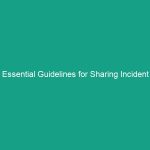Good Morning Team
Today, we are going to dive deep into an essential topic that ensures our Safety on the job site: Essential Energy Isolation Verification: Confirming Controlled Energy Sources. Understanding energy isolation is crucial for preventing workplace accidents and ensuring that we all return home safe at the end of the day.
Understanding Essential Energy Isolation Verification
So, what exactly is Essential Energy Isolation Verification? This term refers to the process of confirming that all energy sources have been effectively isolated and controlled before any Maintenance or repair work begins. This includes electrical, mechanical, hydraulic, and pneumatic sources of energy. The importance of this verification cannot be overstated—it protects not only the individual performing maintenance but also their coworkers and the integrity of the work Environment.
Many people may think that energy isolation is a simple procedure, but it is a critical step that requires careful attention. Misunderstanding or overlooking this process can lead to severe injuries or even fatalities. It’s essential to recognize that energy can be stored in various forms (like compressed air or hydraulic fluids) and can release unexpectedly if not properly isolated.
Key Hazards, Risks, and Safety Considerations
Let’s discuss some specific Hazards and risks associated with energy isolation:
- Unexpected Machine Start-Up: Failure to verify isolation can lead to equipment starting unexpectedly, resulting in injuries.
- Stored Energy Release: Equipment may hold stored energy that can cause harm if not released properly.
- Exposure to Hazardous Materials: Maintenance might involve working with chemicals or other harmful substances that require proper safety protocols.
Ignoring these safety protocols can have real-world consequences, including serious injuries, property damage, and even loss of life. We must remain vigilant and adhere to our energy isolation Procedures to prevent these hazards.
Best Practices, Procedures, & Actionable Advice
Now that we understand the risks, let’s focus on Best Practices for energy isolation verification:
1. Understand the Energy Sources
Before starting any work, identify all potential energy sources connected to the equipment. This includes:
- Electrical sources
- Mechanical systems
- Hydraulic fluids
- Pneumatic systems
2. Use Lockout/Tagout (LOTO) Procedures
Implementing Lockout/Tagout procedures is crucial. Here’s a quick overview:
- Lockout: Physically isolating the energy source by applying a lock.
- Tagout: Placing a tag on the locked-out device indicating that it should not be operated.
Ensure every team member understands how to utilize LOTO effectively.
3. Test the Isolation
After locking out energy sources, always conduct a test to ensure that the energy has been effectively isolated. This can involve:
- Attempting to operate the equipment
- Using testing devices to confirm that no voltage or pressure is present
4. Communicate Clearly
Ensure that everyone involved in the maintenance work is aware that the equipment is locked out. Use clear communication methods, such as team meetings or written notices.
5. Document Everything
Keep a record of all energy isolation procedures performed. Documentation not only helps in compliance but also serves as a reminder of protocols followed.
Regulations, Standards, and Compliance
Compliance with safety Regulations is non-negotiable. Here are some key guidelines to be aware of:
- OSHA Standards: The Occupational Safety and Health Administration (osha) provides regulations on lockout/tagout procedures in 29 CFR 1910.147.
- ISO 45001: This international standard outlines requirements for an Occupational Health and safety (OH&S) management system.
Adhering to these standards is essential for maintaining a safe work environment and avoiding legal consequences.
Employee Engagement & Discussion
Now, I want to hear from you. What safety challenges have you encountered related to energy isolation? Have you ever experienced a situation where isolation was not properly verified? Your insights can help us improve our safety practices as a team.
Feel free to share your thoughts or experiences. Remember, safety is a shared responsibility!
Conclusion & Key Takeaways
To wrap up, today we covered the essential steps for Energy Isolation Verification and why it is vital for our safety. Here are the key points to remember:
- Identify and understand all energy sources.
- Implement Lockout/Tagout procedures effectively.
- Always test the isolation before starting maintenance work.
- Communicate clearly with your team.
- Document all procedures for compliance and future reference.
Thank you all for your attention and commitment to safety. Let’s make sure that we apply these practices and prioritize our well-being on the job site. Together, we can create a safer work environment for everyone!


